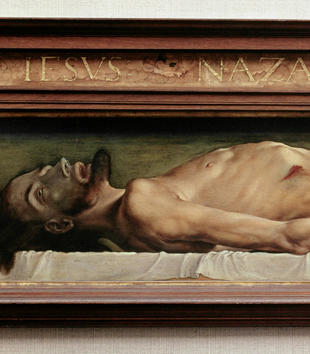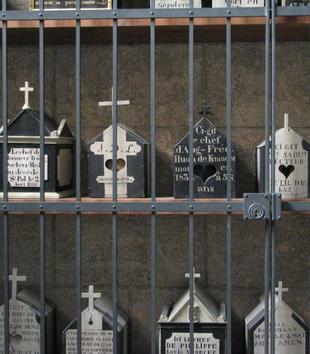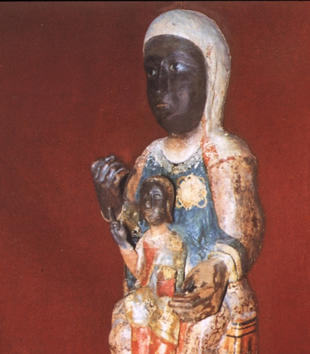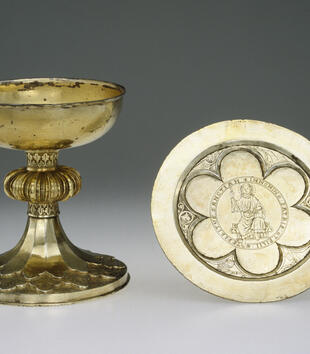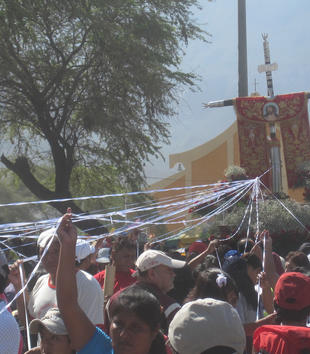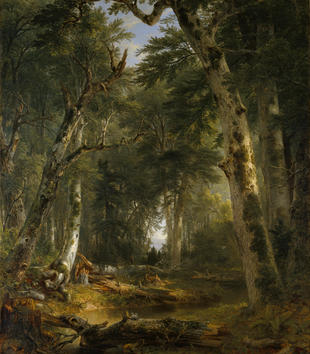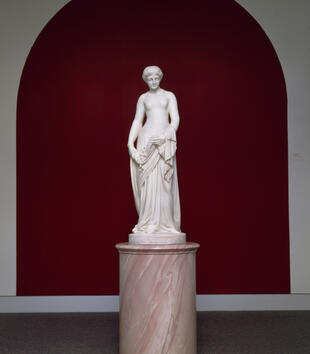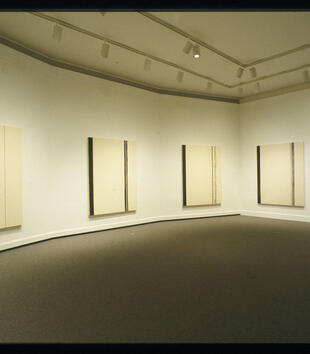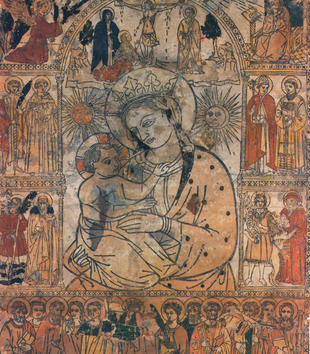You are here
Conversations: An Online Journal of the Center for the Study of Material and Visual Cultures of Religion
MAVCOR began publishing Conversations: An Online Journal of the Center for the Study of Material and Visual Cultures of Religion in 2014. In 2017 we selected a new name, MAVCOR Journal. Articles published prior to 2017 are considered part of Conversations and are listed as such under Volumes in the MAVCOR Journal menu.
-
“Why, some people may lose their faith looking at that picture!” Dostoyevsky famously had his fictional character Prince Myshkin exclaim over Hans Holbein the Younger’s Dead Christ Entombed.
-
Skull boxes that both memorialized a dead individual and displayed the deceased person’s skull were made in Brittany from the eighteenth century to about 1900.
-
These glass eyes seem to look intently at the viewer, seizing the viewer’s attention. This is precisely what they are intended to do by the Shvetambar Murtipujak Jains of western India; it is also precisely why the Digambar Jains of western India strenuously object to them.
-
This Marian icon cannot be characterized as a single object as the perception of her authenticity, from which she gains her numinous power, draws on two distinct representations, one nested inside the other.
-
In 1890 two men working in the area around Dolgellau in North Wales discovered this pair of objects in a crevice between rocks. Encrusted with soil and plant matter, the objects were not at first identifiable.
-
Credited with saving the town from sure disaster, the Cross of Motupe became the centerpiece of a devotion that drew pilgrims from throughout the region, and eventually from throughout Peru.
-
In June 1840, Asher Durand wrote in his journal: “Today again is Sunday. I have declined attendance on church service, the better to indulge reflection unrestrained under the high canopy of heaven, amidst the expanse of waters—fit place to worship God and contemplate the wonders of his power.”
-
This is a Buddhist votive stele made in the sixth century in north central China. It probably stood either in the courtyard of a Buddhist monastery, or in a public place such as a market square, or at a major crossroads.
-
Given the fact that Benjamin Paul Akers was a Protestant working at a time when nativist and anti-Catholic sentiments ran high in the United States, his choice to depict a miracle performed by an Eastern European saint seems peculiar, as does the popularity of his sculpture.
-
According to the art critic Harold Rosenberg there is nothing religious about Barnett Newman’s series of fourteen roughly human-sized, black and white paintings, The Stations of the Cross: Lema Sabachtani.
-
Mary Lyman’s mourning piece served as visual and material evidence of her education, participation in mourning practices, and her religious and social formation.
-
Forlì's Madonna of the Fire is a large fifteenth-century woodcut almost twenty inches high and sixteen inches wide.
